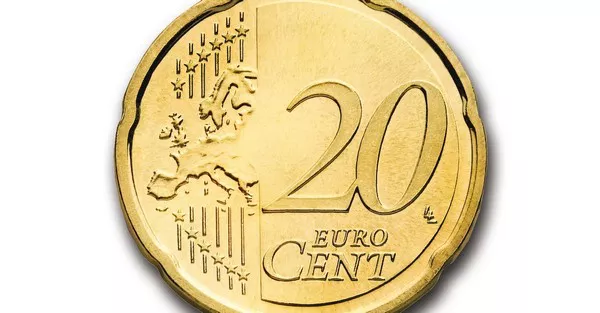The Euro, one of the most widely used currencies globally, is recognized for its distinct and diverse coinage. Among the various coins in circulation, the 20 Euro cent holds a special place. In this article, we will delve into the origins, design, significance, and usage of the 20 Euro cent coin, shedding light on the country behind its issuance.
1. The Birth of the Euro:
The Euro came into existence on January 1, 1999, as an accounting currency used by financial institutions and central banks. It was not until three years later, on January 1, 2002, that Euro banknotes and coins were introduced for public use, replacing the national currencies of participating European Union (EU) countries.
2. The European Central Bank:
Responsible for maintaining price stability and managing the Eurozone’s monetary policy, the European Central Bank (ECB) plays a crucial role in overseeing the issuance and circulation of Euro coins. It collaborates with Eurosystem member countries to ensure seamless implementation.
3. The Eurozone Member Countries:
The Eurozone comprises 19 of the 27 EU member states that have adopted the Euro as their official currency. These countries include Austria, Belgium, Cyprus, Estonia, Finland, France, Germany, Greece, Ireland, Italy, Latvia, Lithuania, Luxembourg, Malta, the Netherlands, Portugal, Slovakia, Slovenia, and Spain.
4. Country of Origin:
Each Euro coin carries a unique design on the reverse side, representing the issuing country. In the case of the 20 Euro cent coin, it is essential to identify the specific country responsible for its issuance. The 20 Euro cent coin features a common design across all Eurozone member countries and does not bear any national symbols or identifying characteristics.
5. Common Design Elements:
The 20 Euro cent coin shares a common obverse design with all other Euro coins. It portrays the denomination (20) encircled by twelve stars, symbolizing Europe’s unity. The obverse side also features the year of issuance and the word “Euro” written in the respective language(s) of the issuing country.
6. The Significance of the 20 Euro Cent:
The 20 Euro cent coin holds both practical and symbolic significance. In terms of practicality, it serves as a medium of exchange for small transactions, such as vending machines, public transportation, or parking meters. Symbolically, it represents the economic integration and cooperation among the Eurozone member countries.
7. Usage and Acceptance:
The 20 Euro cent coin is widely accepted throughout the Eurozone member countries. It can be used alongside other Euro coins and banknotes to make purchases, regardless of the country of issuance. Due to its modest value, the 20 Euro cent coin often accumulates in large quantities but remains an essential component of everyday transactions.
8. Cultural and Historical Influences:
While the 20 Euro cent coin does not display country-specific characteristics, its design reflects the collective cultural heritage of the European Union. European history, art, and architecture are encapsulated within the shared symbolism of the Euro coins, fostering a sense of historical continuity and cross-cultural identity.
Conclusion:
The 20 Euro cent coin may appear small in size, but it carries substantial importance within the Eurozone. Issued collectively by the participating EU member states, it represents their commitment to shared economic goals and monetary cooperation. As we handle these coins daily, let us remember that they serve as tangible reminders of the enduring unity and diversity of Europe.


